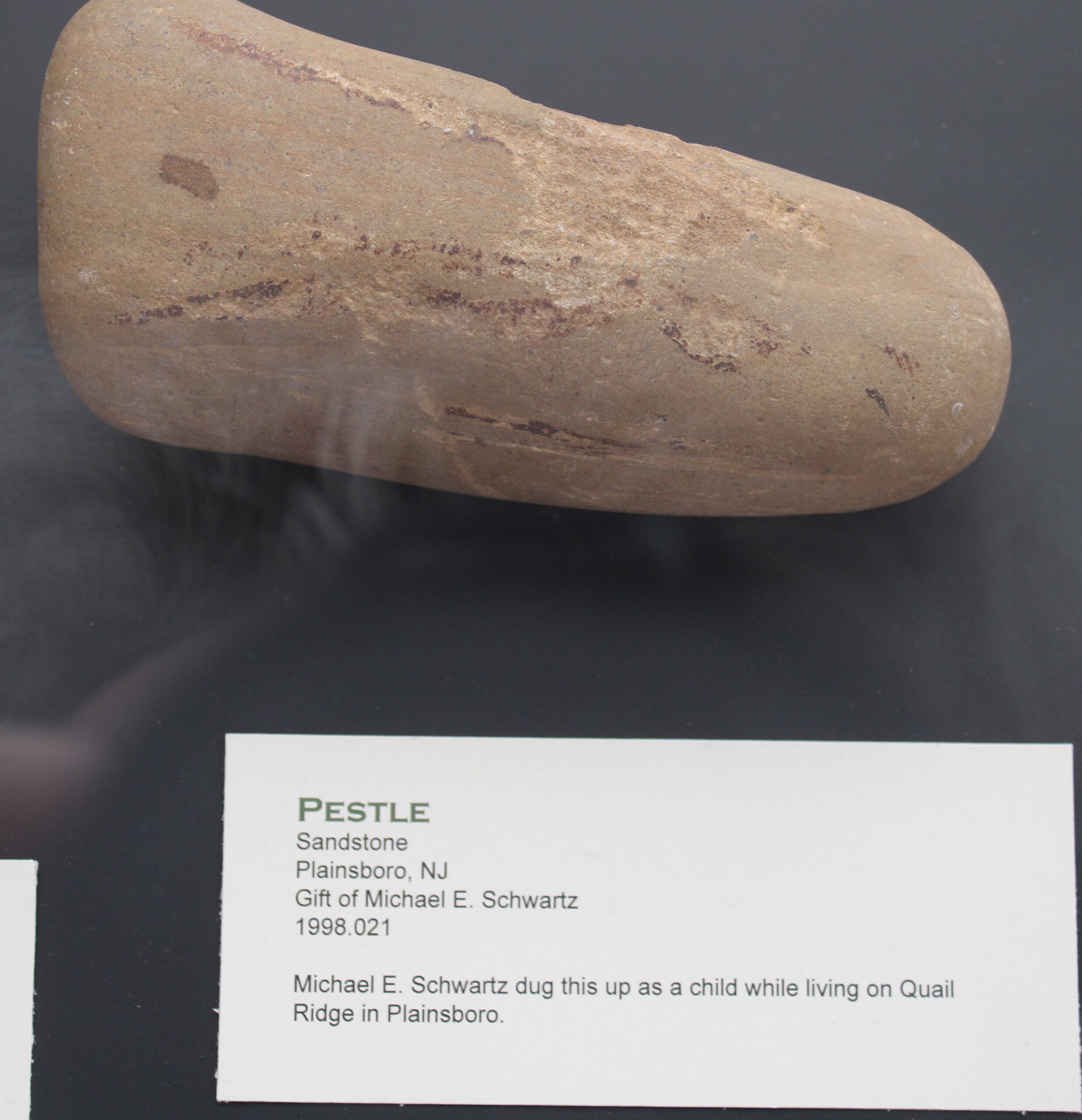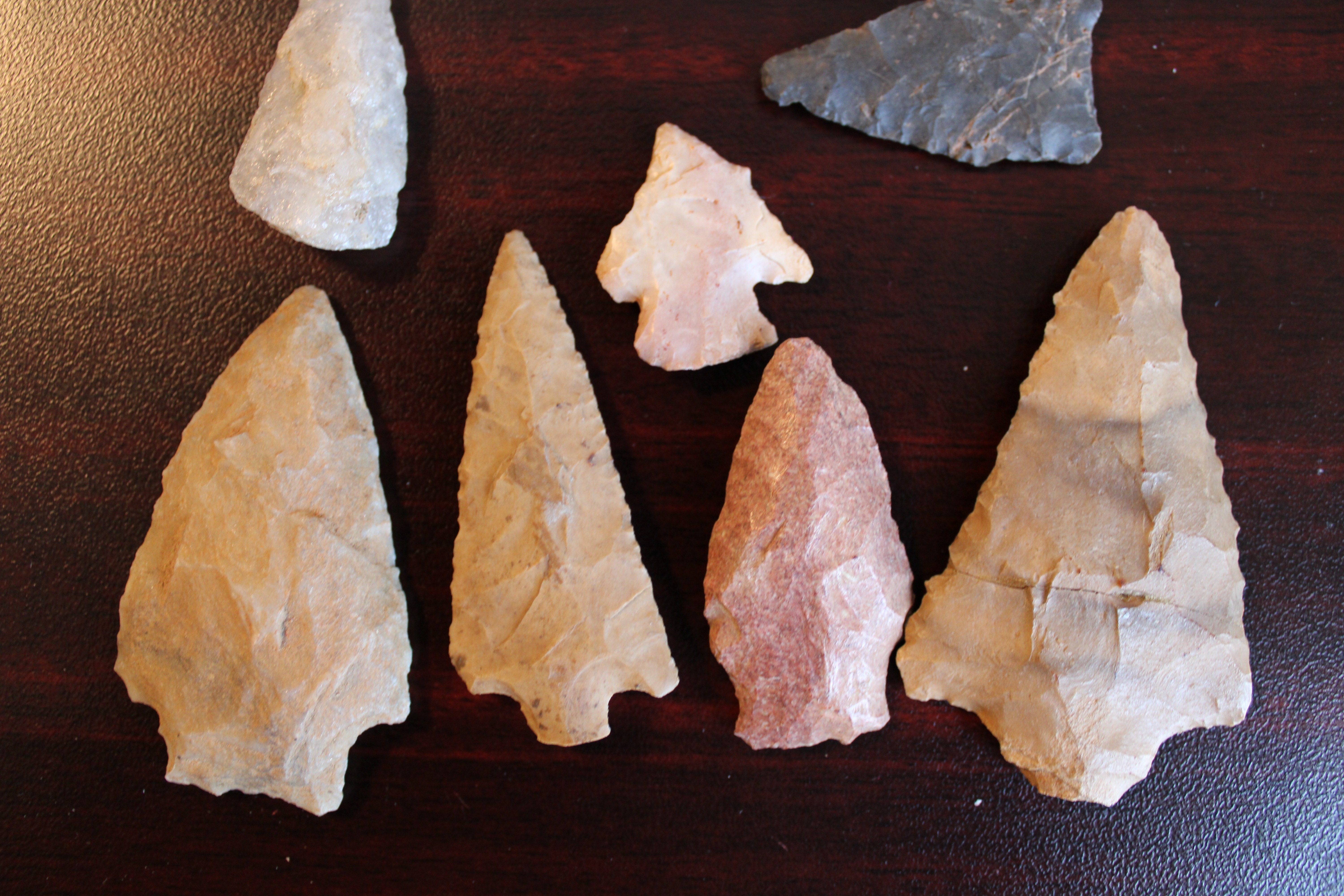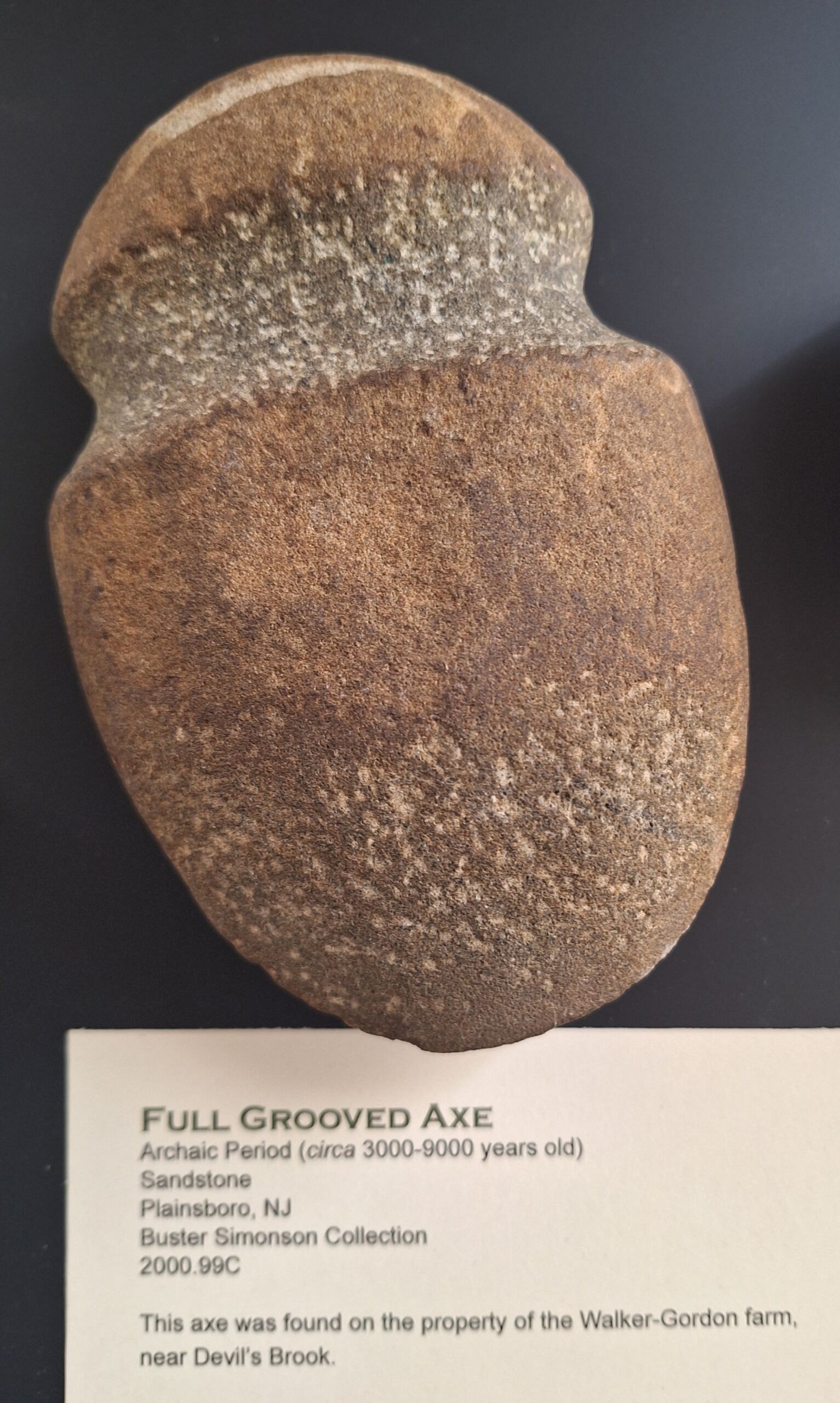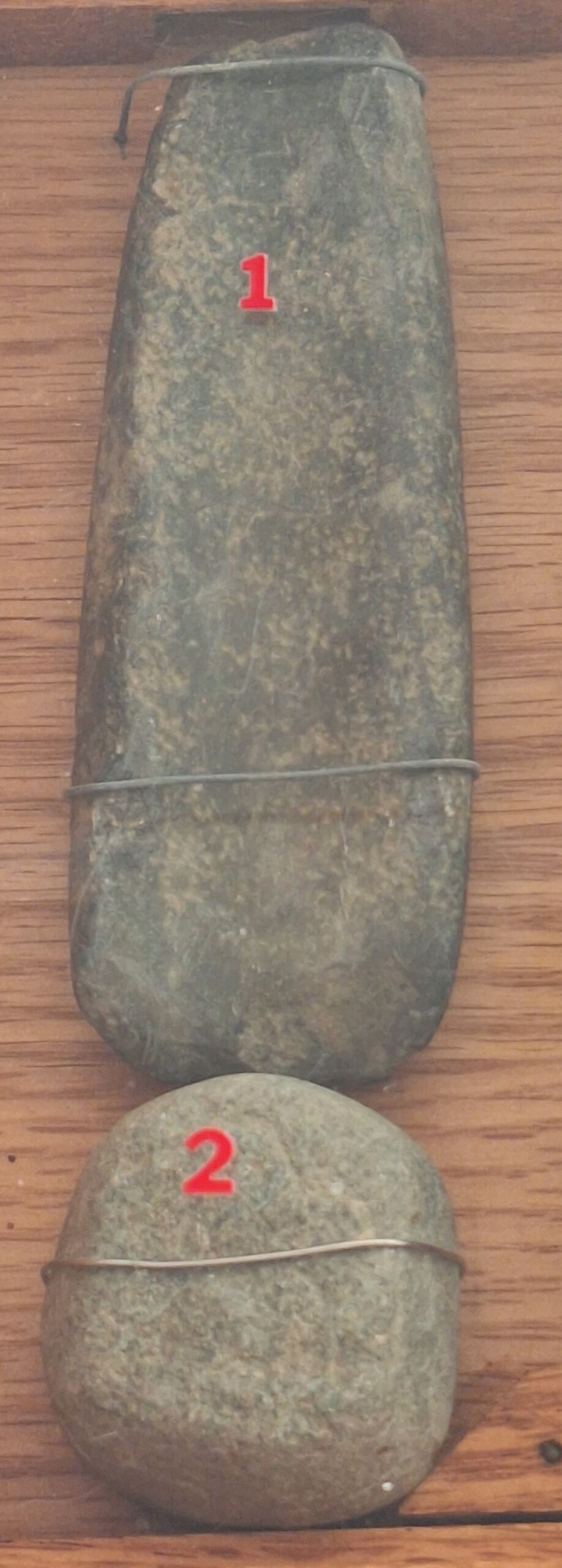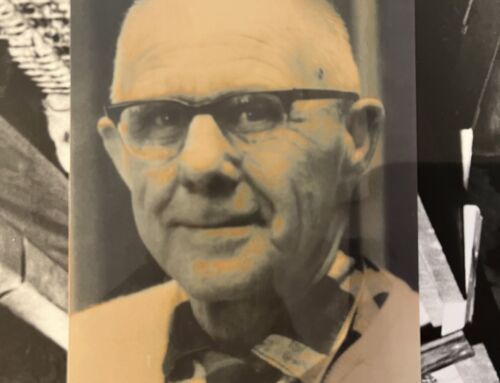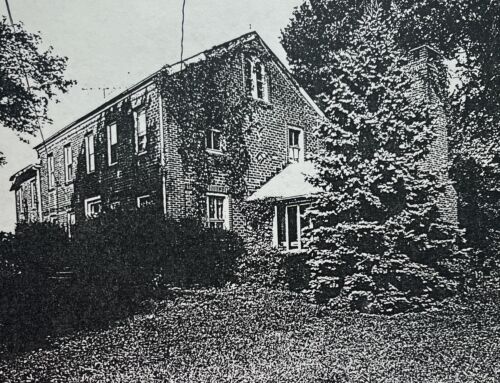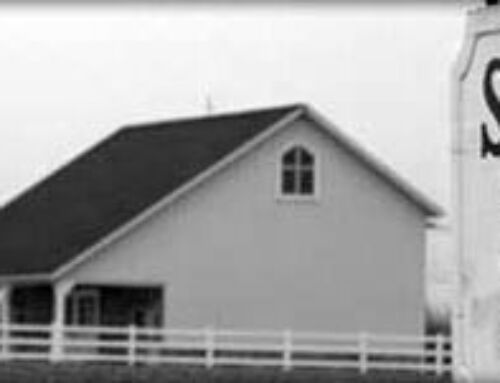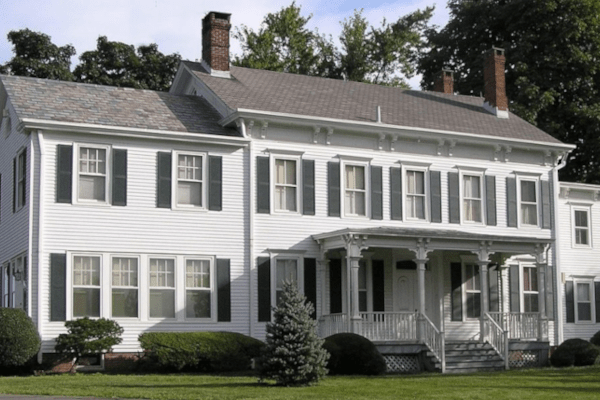The Wicoff House Museum Collection: The First Inhabitants of Plainsboro, Part 5
While the 25,000 artifacts from the 1981-1982 Scudders Mill Road archaeological site were sent to the State Museum, the Wicoff House Museum remembers and honors the Indigenous peoples with a display of stone tools and projectile points donated by local residents.
On display from the Paul Kostue collection are a Middle to Late Archaic Period (c. 6000 – 2000 BCE) argillite gouge and a Paleo-Indian to Late Woodland Period (before 8000 – 2000 BCE) mulling (grinding) stone. As a child living on Quail Ridge in Plainsboro, Michael E. Schwartz dug up a sandstone pestle which is now part of our exhibit. A full-grooved axe made of sandstone from the Archaic Period (c. 8000-1000 BCE) was donated by Buster Simonson, who found this axe on the property of the Walker-Gordon farm, near Devil’s Brook. Numerous locally found projectile points of various ages, sizes and styles are part of the museum’s collection. Growing up on a farm only a few miles from Plainsboro gave me an opportunity to discover projectile points when my father would plow the field. It is quite thought-provoking to hold in one’s hand something last touched by another human being thousands of years ago.
The New Jersey Historic Preservation Office has a fascinating 2018 study by R. Michael Stewart, Phd posted on their website describing the types of artifacts found throughout the Upper Delaware Valley and how such artifacts are dated. With new advances in radiocarbon and other forms of testing, scientists can test marine shells, bones and macrobotanicals (seeds, wood, or other remains visible to the naked eye). In the 1981-1982 Scudders Mills Road bypass archaeological dig, traces of firewood with rings still visible and charred hickory nuts provided researchers with important dating information. Find Dr. Stewart’s study “Archaeology of the Upper Delaware Valley” here: https://www.nj.gov/dep/hpo/1identify/arkeo_upp_del_val.htm
Things to think about: Imagine you were able to hold something in your hand last touched by another human being two thousand years ago. What thoughts and feelings might you experience? The next time you are in a museum, imagine what life might have been like for the people using the items in the displays. Consider what someone two thousand years from now might think if they found an iPhone from 2024. Would people from the future be able to guess what it was? What do you think would remain of an iPhone or a laptop computer after two thousand years?
